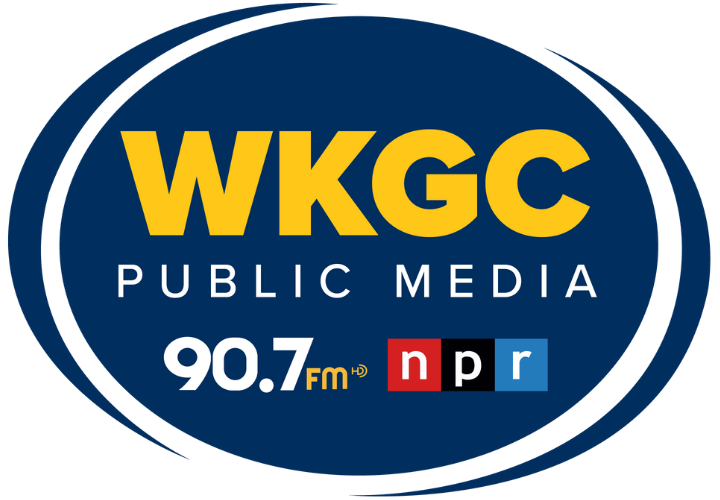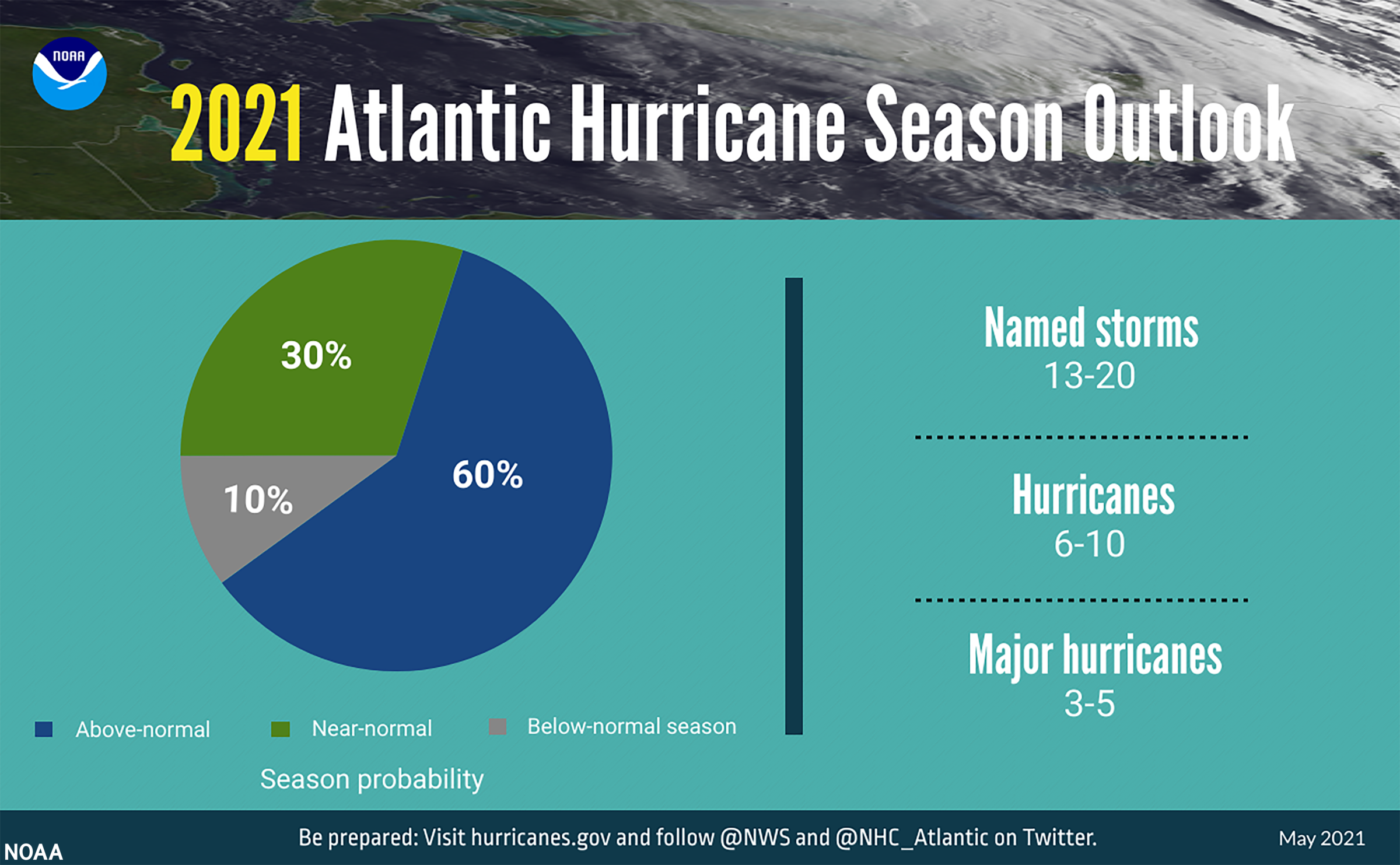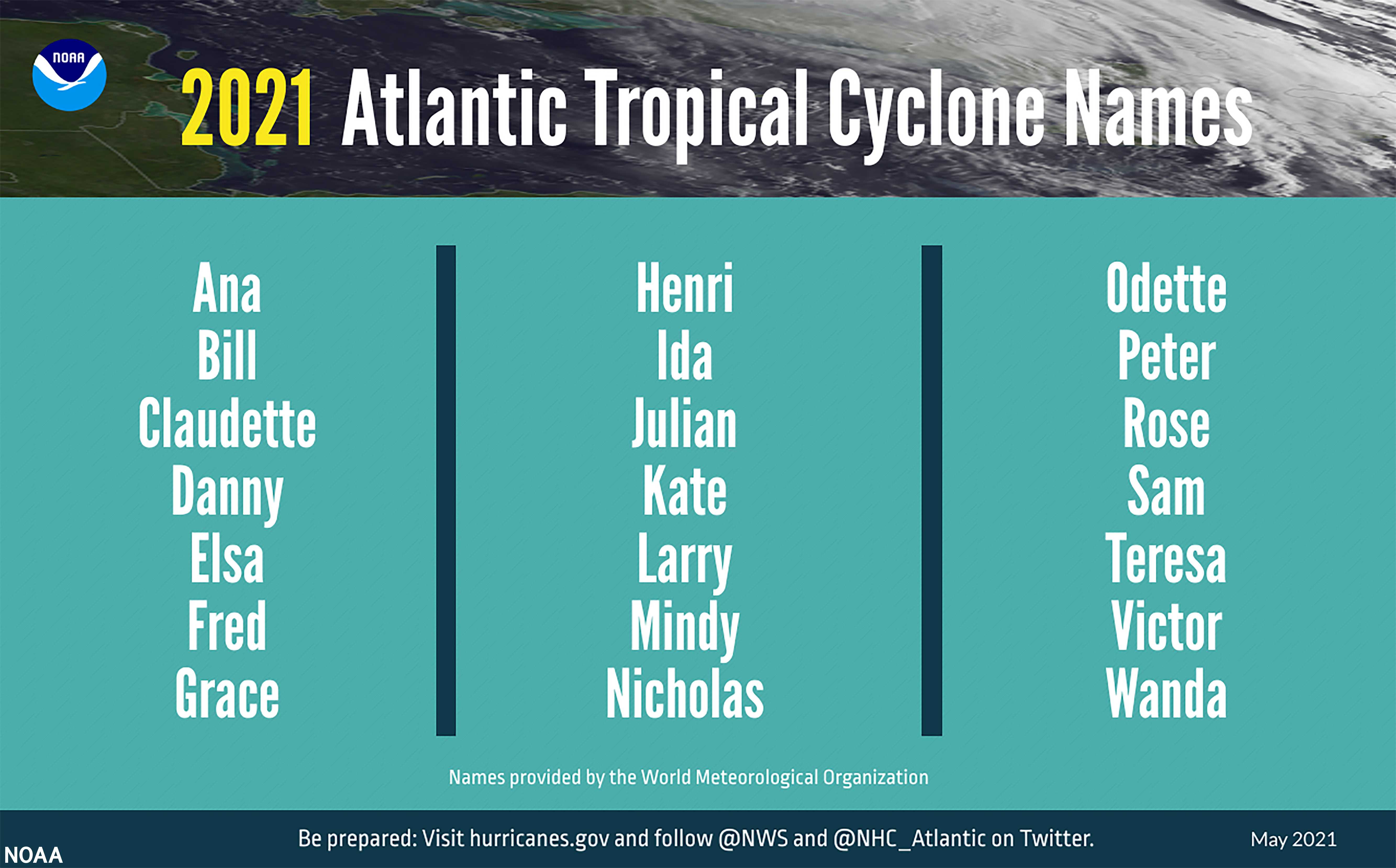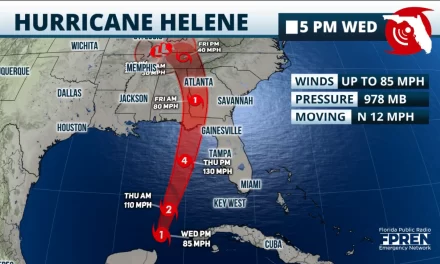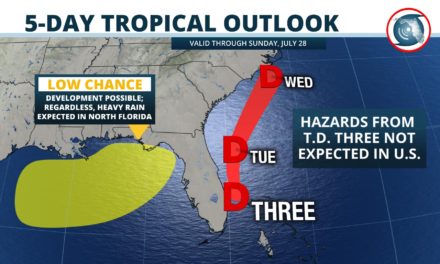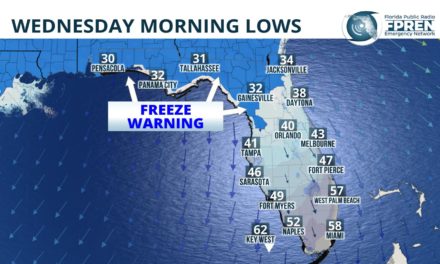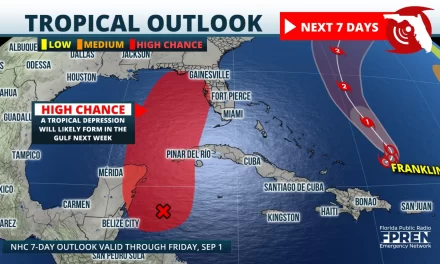
NOAA Says Another Above-Normal Hurricane Season is Likely
A summary infographic showing hurricane season probability and numbers of named storms predicted from NOAA’s 2021 Atlantic Hurricane Season Outlook. (NOAA)
Gainesville, Florida – An above normal hurricane season is likely again this year, according to the acting NOAA Administrator Ben Friedman. However, he says it is unlikely to be as active as the historic 2020 season.
Highlights from NOAA’s 2021 Atlantic Hurricane Season Outlook. A close-captioned version of this video can be viewed on the National Weather Service YouTube channel at https://youtu.be/cU0ljJ4v-XA.
Forecasters at NOAA’s Climate Prediction Center say they have a confidence level of 70 percent in a forecast that includes 13 to 20 named storms (winds of 39 mph or higher), of which 6 to 10 could become hurricanes (winds of 74 mph or higher), including 3 to 5 major hurricanes (winds of 111 mph or higher).
A summary graphic showing an alphabetical list of the 2021 Atlantic tropical cyclone names as selected by the World Meteorological Organization. The first named storm of the season. The official start of the Atlantic hurricane season is June 1 and runs through November 30. (NOAA)
The seasonal averages for activity, which have recently been updated to use 1991-2020 as the new 30-year period of record, are 14 named storms and 7 hurricanes, of which 3 become major hurricanes.
Likely factors contributing to this year’s above-normal forecast include warmer-than-normal sea surface temperatures over the Tropical Atlantic Ocean, an enhanced African monsoon season, weaker trade winds and a neutral phase of the El Nino Southern Oscillation (ENSO). The warmer water temperatures provide fuel for tropical cyclones to form. The enhanced African monsoon can add more moisture and instability to tropical waves that move across the Atlantic. Weaker trade winds that blow toward the equator from the northeast will make cyclone organization easier, and if the ENSO phase remains neutral that tends to allow tropical systems to mature and prolong their life across the basin.
The NOAA forecast released Thursday is consistent with other agency forecasts for an above-normal season that have been previously released this spring. The next forecast update from NOAA on the 2021 Atlantic Hurricane Season will be released in early August.
Story by FPREN Meteorologist Jeff Huffman.
